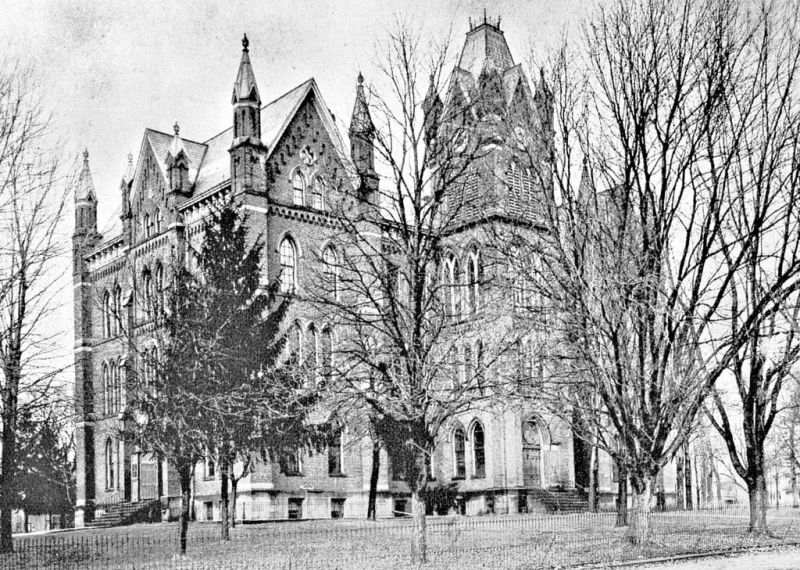Remembering the first high school built in Wooster
Editor’s note: This is part 1 of a 3-part series.
In the early 1850s, each of the four wards of Wooster built a school house. Each school had two stories to serve Wooster children of all ages. Each floor was divided into two rooms, primary and secondary on one floor and grammar and high school on the other. Four years later all schools were united under one board of education. The high school was in the third ward building, the grammar school in the second ward and the other two wards were used for the primary grades.
Around 1860, wanting to upgrade public educational opportunities in Wooster, Wooster High School was defined. But it wasn’t until the mid-1860s that planners began an effort to build their own central school.
The Wooster Board of Education began issuing bonds paying 8% interest. On Aug. 31, 1867, a meeting was held at the Wayne County Courthouse to decide where to build the central high school. To be decided was whether to utilize property already owned by the board or purchase a more desirable lot owned by Ephraim Quinby, Jr.
Ultimately, it was decided to sell the lot the board owned and purchase Quinby’s lot, located on the northwest corner of Quinby and Bowman.
Heard & Blythe Architects of Cleveland was hired. The plans and drawings it developed were put on display at the courthouse for the public to review in mid-January 1868. After all public concerns were addressed, sealed bids for construction were announced, to be received no later than Feb. 29, 1868. Construction was expected to be complete by fall 1870. Coincidentally, Wooster University was constructing “Old Main,” its first academic building. It was a very exciting time for Wooster.
Many homes along North Market Street were witness to the construction of the first high school. Among others were the McSweeney home (Hothem Realty) and the Annat Home (Broehl Law Offices). The building site was located just south of City Park, where some of the first Wayne County Fairs were held. That the site was, at that time, near the northern edge of Wooster reveals how Wooster was expected to grow.
On Sept. 12, 1870, Wooster’s school year began. The primary school now occupied all four older ward schools with early primary on the first floor and later primary on the second floor. The following day the new high school was dedicated and open to the public to tour. Speakers included Aquila Wiley, Martin Welker and Dr. Leander Firestone. First classes were held Sept. 14, 1870. The first floor was reserved for secondary school. The second floor was dedicated to the grammar school. High school was held on the third floor. The final cost of the building was over $113,000. That’s well over $2,500,000 in today’s currency.
For the next 30 years, Wooster High School served the public. Many well-known personalities were educated there. John McSweeney III, a decorated officer of World War I and representative of this district in the U.S. House of Representatives, was a graduate. His father was John McSweeney II. He was in the last Wooster High School class to graduate from the old four-school system in 1869. Charles Follis, the first professional African American football player and captain of the inaugural Wooster High School football team, attended there as well.
Time, of course, takes a toll on everything, both physically and culturally. The State of Ohio was demanding excellence from public schools, as well as safety for the children who attended them.
Remember Wooster University’s Old Main? It burned to the ground in 1901. The cause was never determined, but many believe it was due to an explosion in a chemistry laboratory. About the same time, the Lake View School in Collinwood near Cleveland burned, killing 172 children. School safety suddenly became a primary concern, and rightfully so. Suddenly, the “Pride of Wooster” became a major liability.
State officials threatened to close Wooster High School if fire-prevention measures were not implemented. They demanded five iron fire escape ladders and fire-proofing the steam-heating system, which would include coating outgoing pipes with asbestos and treating the furnace with an asbestos covering.
There was no choice. The old school had to be replaced. How they did that is another story.
Mike Franks is a local historian. If you have comments or suggestions, he can be emailed at bh_looking_back@aol.com.

